
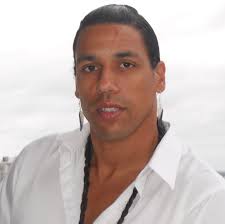
"Introduction to the Wampanoag People" by Annawon Weeden, Mashpee Wampanoag
"Wampanoag (womp-u-nuck) translates in the English language to mean "People of the dawn" or "People of the first light." This describes the people who inhabit the region now known as southeastern Massachusetts and eastern Rhode Island. The exact boundaries varied from the time the Wampanoag first settled in this region roughly 12,000 years ago to the present day. The northern border of Wampanoag territory is the North River around the area now known as Marshfield, Massachusetts. Our southwest border was the body of water now referred to as Narragansett Bay in what is now known as Rhode Island. Cape Cod and the nearby islands, both Nantucket and Martha’s Vineyard, are also within our territory, making the Atlantic Ocean our eastern boundary. We see ourselves as the first to greet the sun on this continent known as America today, thus our name: "people of the first light." Everything we need for our lives comes from Turtle Island, our name for the land on which we reside. The land has changed quite a bit—but our traditions continue, as you will have a chance to experience in these activities."

Wampanoag Origins
The recounting and passing on of spoken history is as valid as any written text. Wampanoag oral tradition affirms that Wampanoag people have always been here. Too often, classroom discussions use the unsubstantiated Bering Straitstheory to explain how America was populated. Listen to contemporary Wampanoag people explain that Massachusetts is the Wampanoag homeland -- they are the indigenous inhabitants. They have been here for thousands of generations.
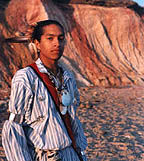
"The legends teach me that we have always been here. Just take the Maushop legend for example. It says that Maushop led our people to Aquinnah to take us away from the fighting that was going on, on the mainland. While he was leading us there he dragged his toe and broke off that piece of land that became Noepe. The fact that he created that island tells me that we have always been there, ever since that place was an island. Ever since that place was created."
-- Tobias Vanderhoop
Aquinnah Wampanoag
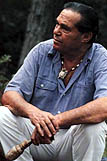
"Ours is an oral history, and was not written down. Our story was never told in American history. This is a time to begin by doing research and writing our history... This is the thing we must do. As the history of New England is re-examined, it is imperative that it be revised to include the Wampanoag side of the story. If this is revisionism, so be it. The history of this country will become more balanced and believable."
-- Russell Peters
Mashpee Wampanoag
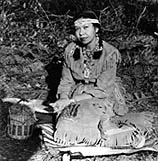
"Moshop was a man of peace who first lived on the elbow of Cape Cod. He loved to contemplate the beauty about him and would sit long hours tranquilly smoking his big Peudelee, or pipe, while he watched the clouds or stared out at the ever- changing sea. He was known as a just man and a kindly philosopher whose wisdom was unquestioned."
-- From "How Martha’s Vineyard Came to Be" as told by Helen Attaquin, Aquinnah Wampanoag (1923 - 1993)
Wampanoag Life Before 1620
For thousands of years, the Wampanoag people maintained a rich, sophisticated society, using their wisdom and knowledge to live fully. Often, the description of Wampanoag culture in storybooks and related materials is trivialized and romanticized and even implies that this culture was primitive. Listen to Wampanoag voices explain that their ancestors' way of life was comfortable, stable, and one with the land.
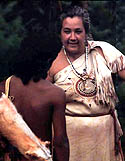
"It's amazing how one group of people can look at another group of people and not credit them with the basic wisdom and common sense to feed, clothe, and shelter themselves in an adequate manner. Give us the respect of being Wampanoag people in our own land."
-- Linda Coombs
Aquinnah Wampanoag
"We have lived with this land for thousands of generations- fishing in the waters, planting and harvesting crops, hunting the four-legged and winged beings and giving respect and thanks for each and every thing taken for our use. We were originally taught to use many resources, remembering to use them with care, respect, and with a mind towards preserving some for the seven generations of unborn, and not to waste anything."
-- Nanepashemet
Wampanoag (1954 -1995)
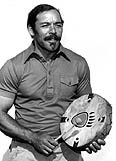
"It is a seasonal-based diet. That is to say, as fruits, berries, and flowers came into their season, they were harvested and consumed in large quantities while they were fresh and available. Surplus was preserved by such methods as drying, smoking, and the like. All forms of fowl, water fowl, and some now-extinct fowl were gathered and consumed, such as roasted ducks, roasted geese, passenger pigeon, partridge. As were all the quadrupeds or four-legged animals such as deer, bear, moose, elk, raccoon, rabbit, skunk, squirrel."
-- Earl "Chiefie" Mills, Jr.
Mashpee Wampanoag
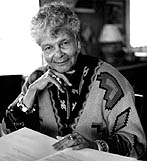
-- Helen Manning
Aquinnah Wampanoag
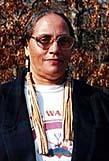
-- Joan Avant Tavares
Mashpee Wampanoag
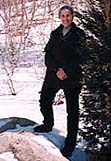 "Since the boats arrived on this continent, even before the Colonists, the intruders have done everything possible to take over and eradicate the Indigenous People by force of the gun. Land was stolen, tribal peoples were moved all around the country, and our ways of worship were forcibly changed."
"Since the boats arrived on this continent, even before the Colonists, the intruders have done everything possible to take over and eradicate the Indigenous People by force of the gun. Land was stolen, tribal peoples were moved all around the country, and our ways of worship were forcibly changed."-- Nancy Eldredge
Wampanoag
Economic and Cultural Survival
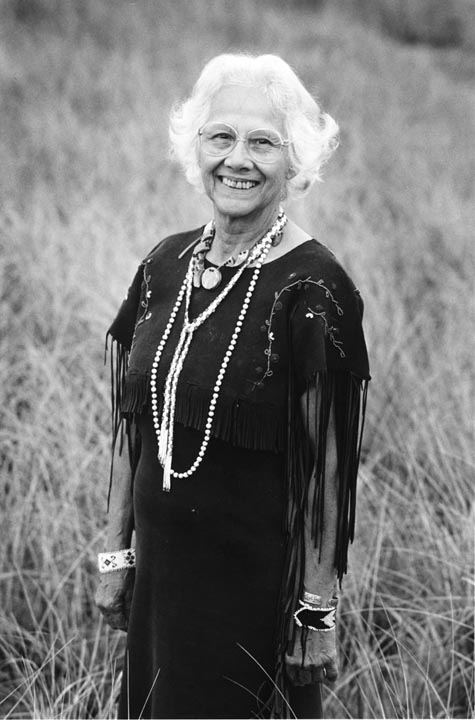
-- Gladys Widdiss
Aquinnah Wampanoag
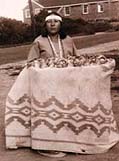
"I used to drive the oxen and everything. Used to go everywhere with them, used to hay and plow the fields with Grandpa. Oh, loads of fun."
-- Minnie Malonson
Aquinnah Wampanaog
(Glady's Mother, 1896 --1982)
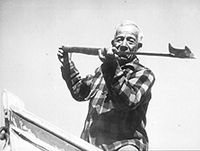
-- Amos Smalley
Aquinnah Wampanoag
(1877--1961)
Oppression and Resistance
"We poor Indians in Mashpee, in Barnstable county, we truly are much troubled by these English neighbors of ours being on this land of ours, and in our marsh and trees. Against our will these Englishmen take away from us what was our land. They parcel it out to each other, and the marsh along with it against our will. And as for our streams, they do not allow us peacefully to be when we peacefully go fishing. They beat us greatly, and they have houses on our land against our will."
"The land of my fathers was gone; and their characters were not known as human beings but as beasts of prey. We were represented as having no souls to save, or to lose, but as partridges upon the mountains. All these degrading titles were heaped upon us. Thus, you see, we had to bear all this tide of degradation."
-- William Apess
Pequot (1798--1839)
(So loved that he was officially adopted by the Wampanoag)
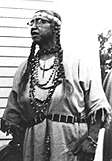
-- Mable L. Avant
Mashpee Wampanoag
(1892 --1964)
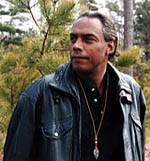
"My name is Maurice L. Foxx I am also known as Strong Bear. I am a tribal member, Wampanoag Nation, Massachusetts. I am also Commissioner on Indian Affairs. I've been working to come up with ideas that bring the people of the native community and the people of Massachusetts to an awareness of the fact that native people are still here. We've changed somewhat but we're still here."
Mashpee Wampanaog
-- Maurice L. Foxx
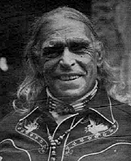
""What every American Indian must learn to do is keep both feet on shore, remain an Indian, but also understand the need to occasionally sail into the white man's territory to survive."
Supreme Medicine Man
Mashpee Wampanoag
(1930 - 1997)
-- John Peters Slow Turtle
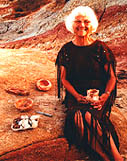
"As Native Americans we've been rather quiet about our identity until the late 1960s. We've always been self-sufficient; knew how to take care of our families and how to use everything around us. Now, If you're going to survive as Native Americans, you need to open your mouth and say 'I'm Here!'"
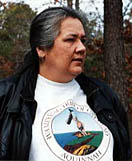
"My name is Linda Coombs. I am a member of the Aquinnah or Gay Head Wampanoag. I live in Mashpee because that is a Wampanoag community and I have lived there for 20 years. A lot of times people think that being Indian is something you do rather than something you are. I’ve had people ask me, 'So, how do you like being an Indian?' Well, compared to what? I have never been anything else."
Aquinnah Wampanoag
-- Linda Coombs
Generations to come
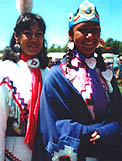
"It still amazes me that people think we live in teepees... (I think teachers should understand) that if there is one native kid in your classroom, they can't represent a whole nation -- they are just one person's point of view."
-- Mishanagqus, age 16
Mashpee Wampanoag
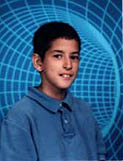
-- Eddie, age 13
Aquinnah Wampanoag

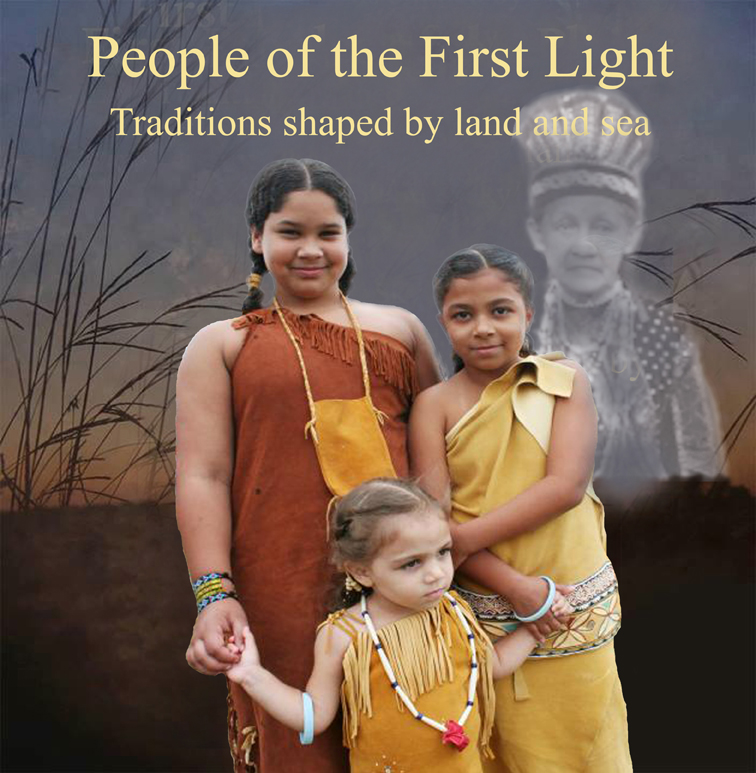
Name:
Wampanoag (pronounced wam-puh-NO-ag), properly spelled Wopânâak, which means People of the First Light. The Wampanoag have also been called Massasoit, Philip's Indians, and Pokanet (from the name of their principal village.)
Location:
At the time of European contact the Wampanoag occupied 67 villages that covered the entire area along the east coast as far as Wessagusset (known as Weymouth today), all of what is now Cape Cod and the islands of Natocket and Noepe (now known as Nantucket and Martha's Vineyard), and southeast as far as Pokanocket (now called Bristol and Warren, Rhode Island).
Population:
In the 1600's there were an estimated 40,000 Wampanoag. Today, there are several primary groups making up the majority population - Mashpee, Aquinnah (Gay Head), Chappaquiddick, Nantucket, Nauset, Patuxet, Pokanoket, Pocasset, Herring Pond, Assonet, Seekonk and approximatley 50 more groups. Recently, it was discovered that there are Wampanaog people living in the Caribbean islands. These people are descendants of the Native Wampanoag people who were sold into slavery after King Philip's War.
Origins:
Ancestors of the Wampanoag occupied the territory where the Pilgrims first encountered then for approximately 12,000 to 15,000 years.

